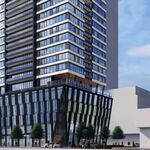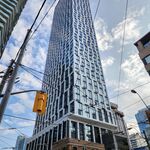unimaginative2
Senior Member
Yes, but unlike downtown stations, you have to pay an extra fare to do so (at least when the bust terminal operates).
Yet another problem that would be solved with timed transfers.
Yes, but unlike downtown stations, you have to pay an extra fare to do so (at least when the bust terminal operates).
This is Ontario, where people do not want, generally, to live in dense areas, where people, as soon as they turn 16 want a car, where near every family has at least one car, and where people do not live anywhere near their work. These transit ideas are based, not on how people in Ontario actually live, but how some Euro-idealogue planners think they SHOULD live.
But the growing downtown population is middle and upper class Ontarians. The lower class and immigrants are being pushed out of the dense city areas by market forces to lower cost housing outside of the city, where again, it is necessary to use a car for most travel. So, if that immigrant or poor fellow living in Brampton has a job downtown Toronto, then make sure he can park his car at the station...or....improve the bus service, so that he can dump his car and take a city bus that arrives before the GO Train leaves.Is that really a generalization of Ontarians? Perhaps a generalization of middle and upper class Ontarians, not of the lower class or the new immigrants who have better things to worry than getting a car, and actually manage quite well by walking, biking or taking public transit. I also see in the New Urbanist neighbourhoods and the growing downtown population the trend of people finding denser neighbourhoods attractive.
make sure he can park his car at the station...or....improve the bus service, so that he can dump his car and take a city bus that arrives before the GO Train leaves.
These transit stations are exactly where high density development should be. There's a lot of demand for it, as evidenced by the thousands of towers in the park scattered all over the suburbs. How many people in the suburbs wish they could live closer to GO stations? This is Ontario, not Houston, Phoenix, or whatever sunbelt city you seem to think we are (see, both sides can throw around rhetoric). My point is that you can accommodate high density communities surrounding rail stations and have car parking as well.I get the sense that the folks that want these non-car transit hubs are designing them for the city they would like to see (as opposed to what is), which is where everyone lives in dense, tightly populated, multi-story low-rise units, walks or cycles everywhere, where car ownership is rare, and where people live near their work, where it's not only "enthusiasts" that cycle in the winter, etc....
Well....this isn't f#cking Amsterdam, Copenhagen or whatever Euro'topia they're seeking. This is Ontario, where people do not want, generally, to live in dense areas, where people, as soon as they turn 16 want a car, where near every family has at least one car, and where people do not live anywhere near their work. These transit ideas are based, not on how people in Ontario actually live, but how some Euro-idealogue planners think they SHOULD live.
How about we build transit for the people who will actually use it? Let's start with large parking lots, with free parking, to attract the thousands of commuters you want off the highways, taking GO Trains instead. Next, make the trains run both ways, not just downtown in the AM and to the 'burbs in the PM. People work odd hours now, and all over the city, including on Sundays - so give them the ability to take affordable, well serviced transit instead of their cars.
The lower class and immigrants are being pushed out of the dense city areas by market forces to lower cost housing outside of the city, where again, it is necessary to use a car for most travel.




